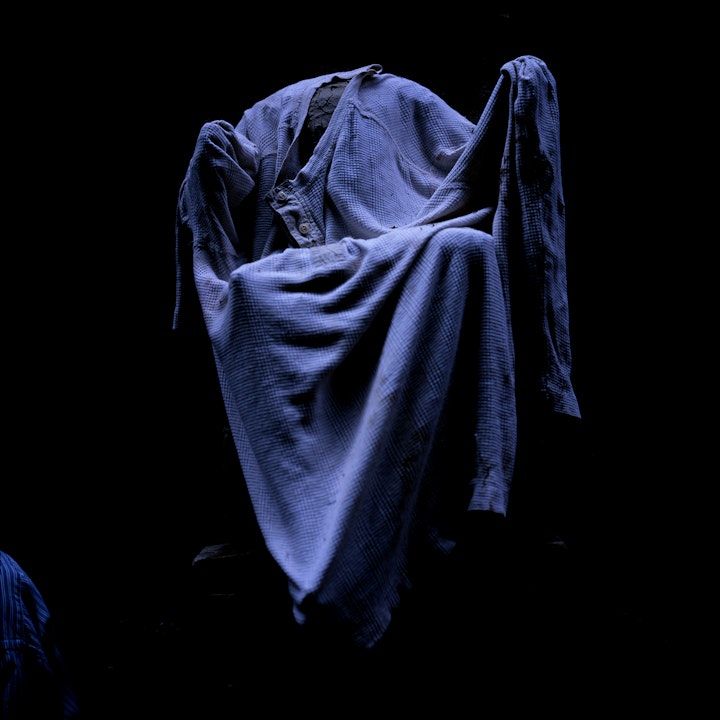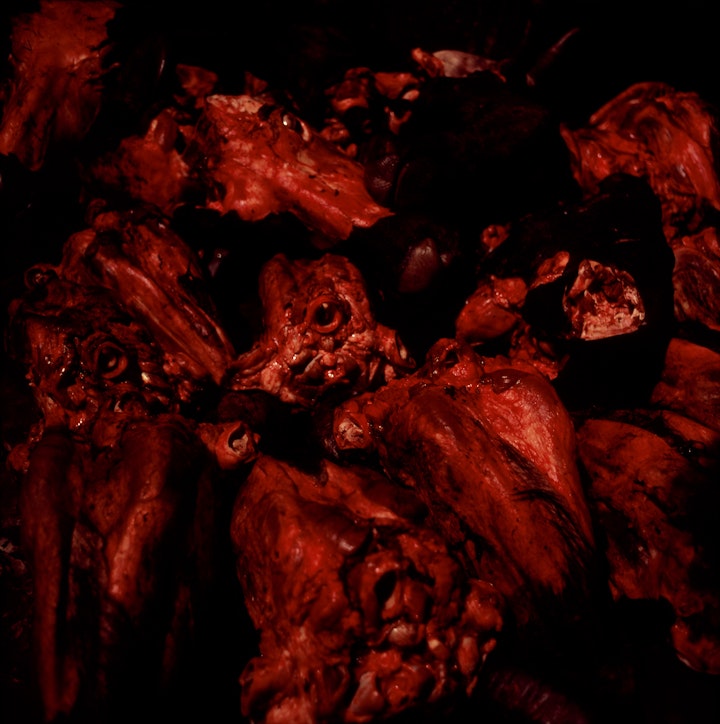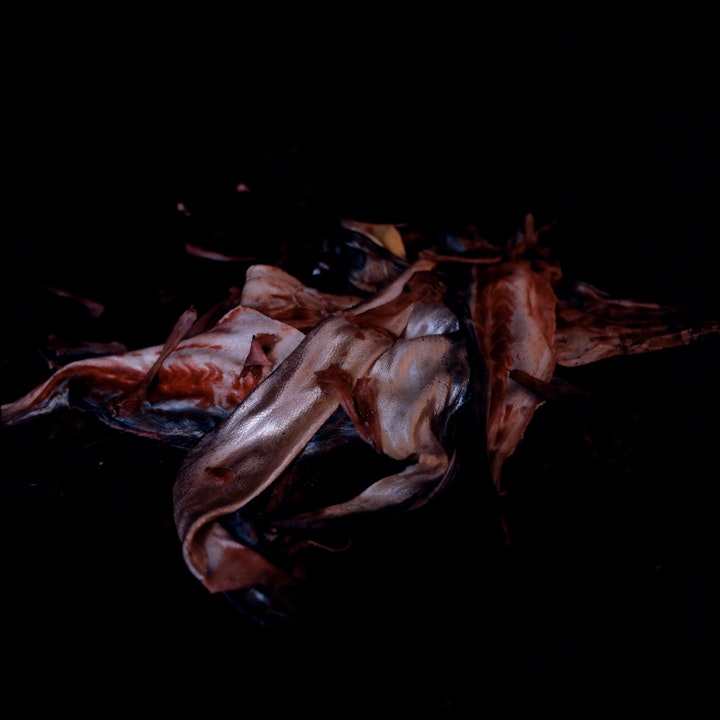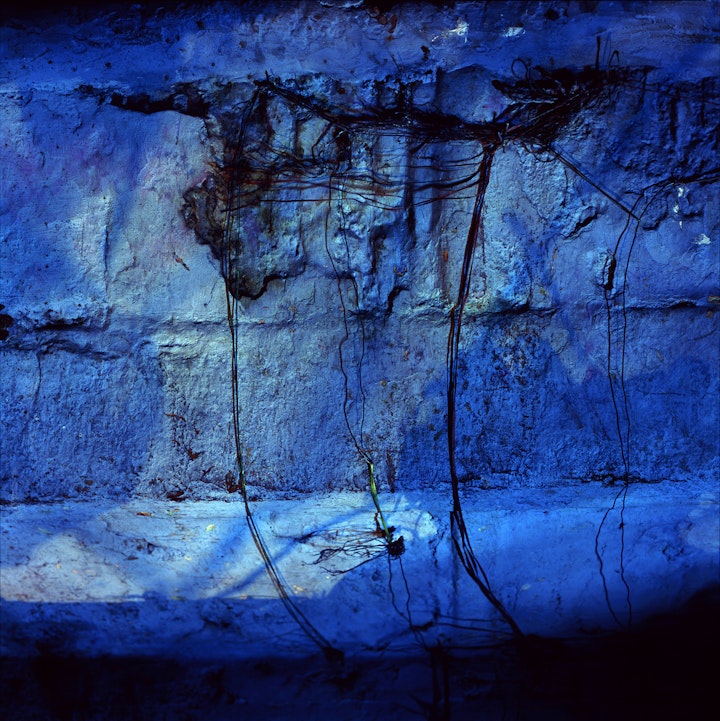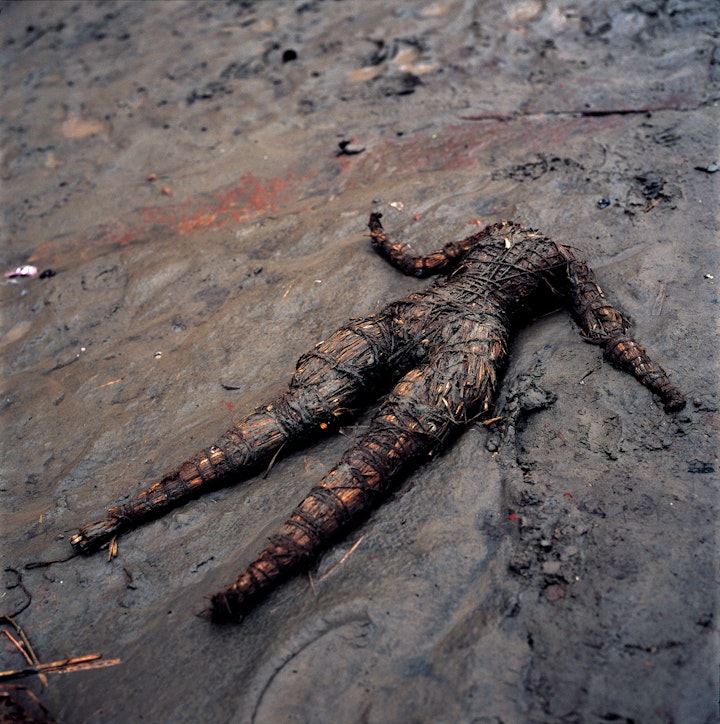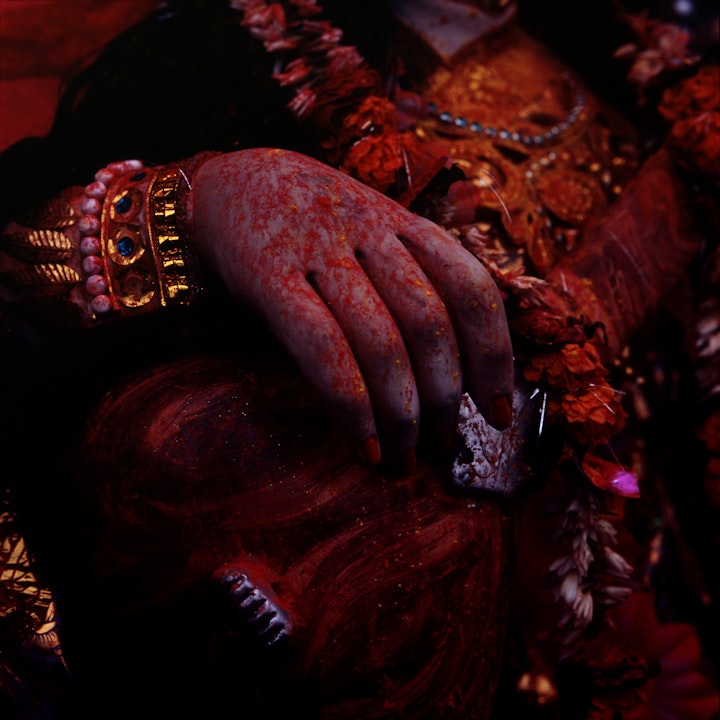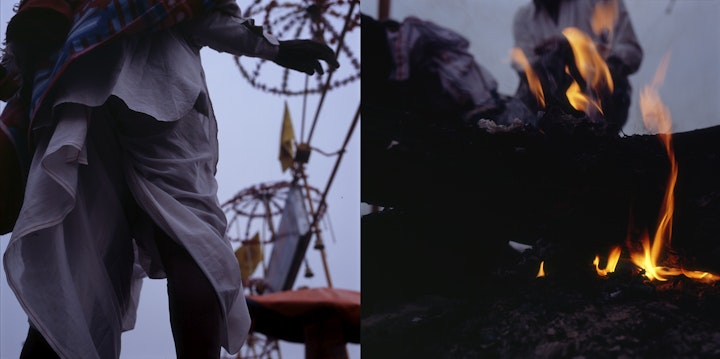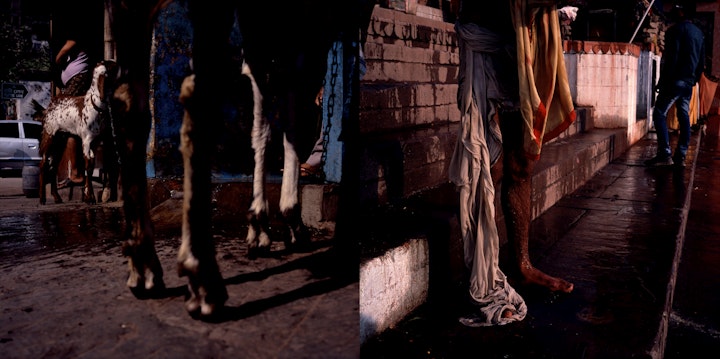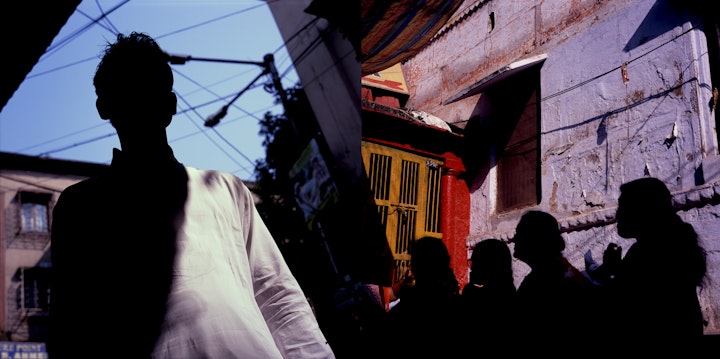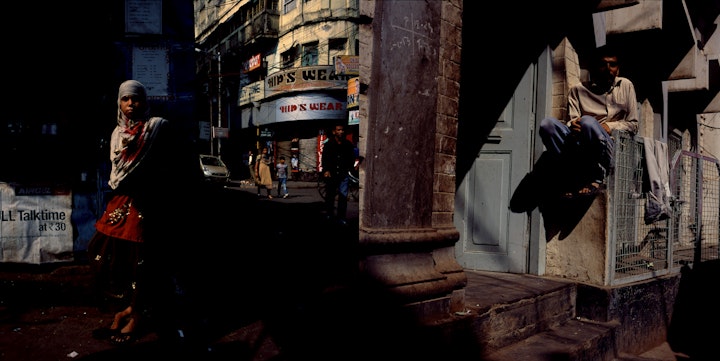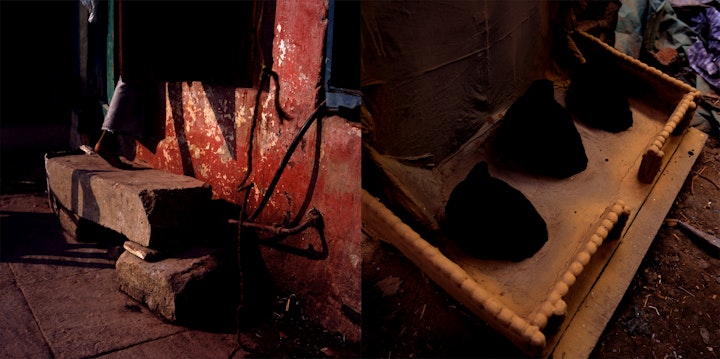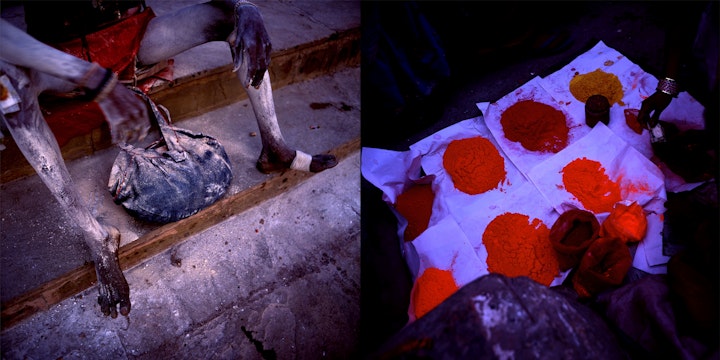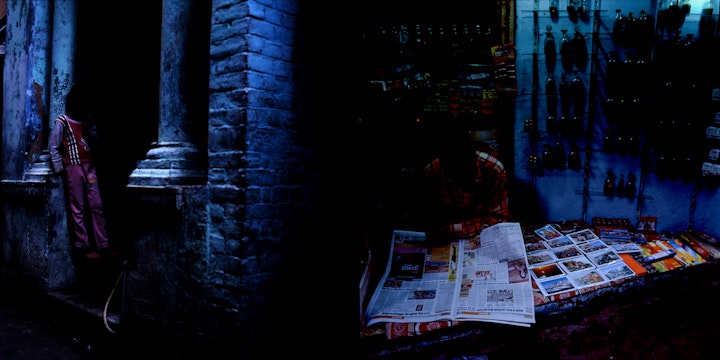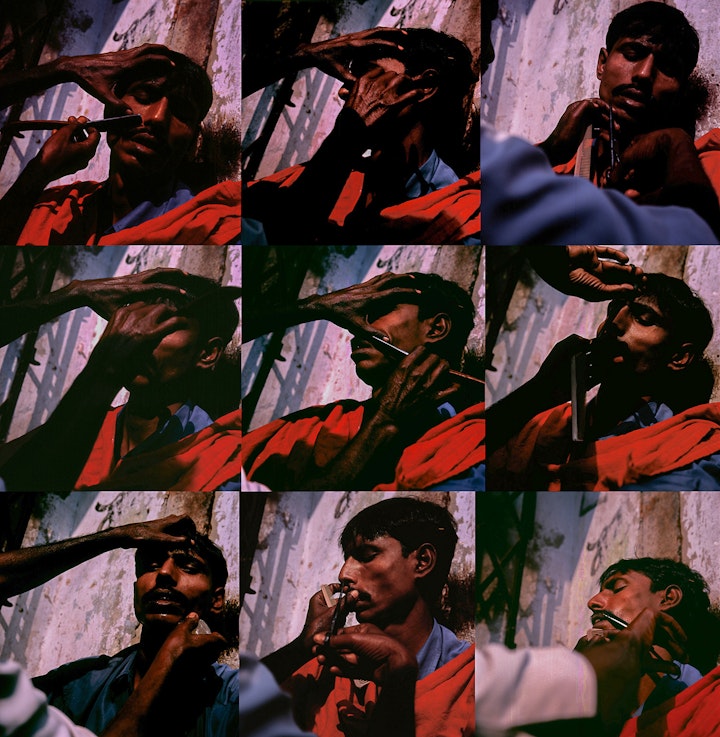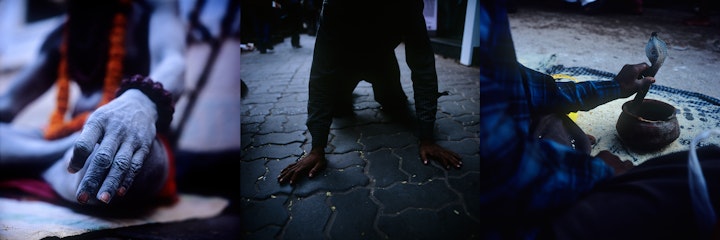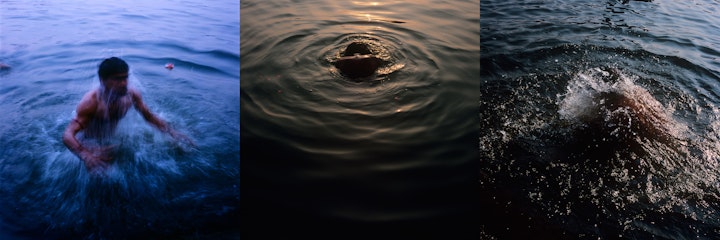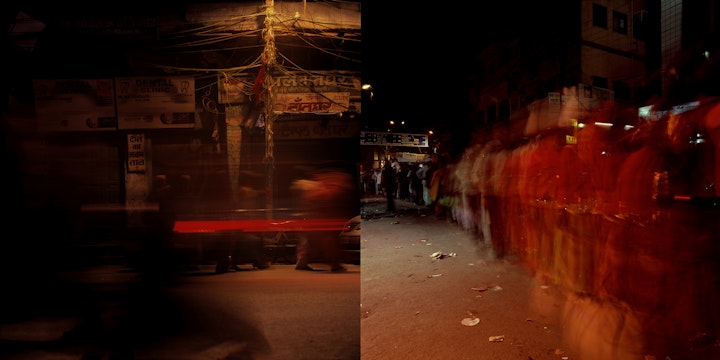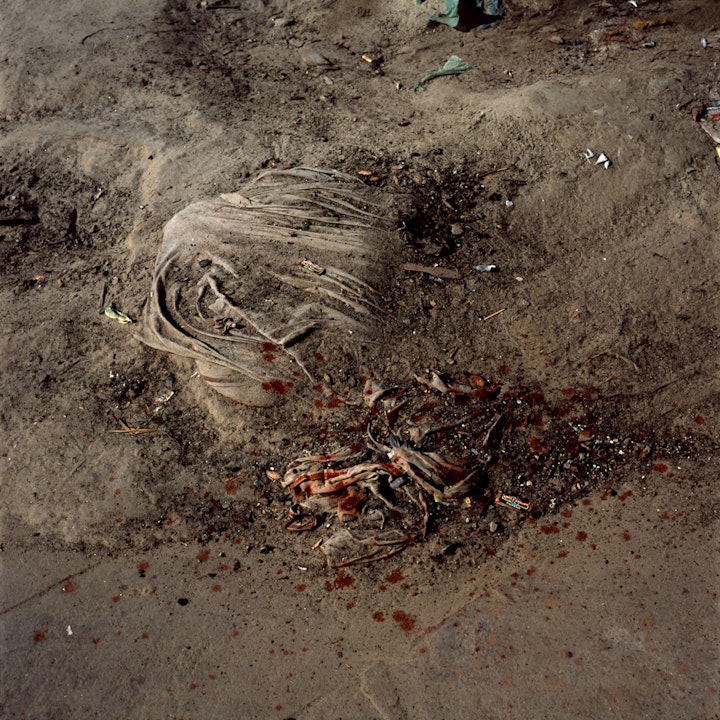samsara (2014)
photography
I traveled to India three times. Walking the streets and their chaotic environments, at first I felt that Indian culture was very strong and still very different from Western cultures and Japan, my native land. Crowded streets, music, traffic noise, horns, dust. I couldn't get used to it, it felt like my brain was melting and could not think straight, as if I were inside a maze. Still, there was something healthy about the passage of time, the tranquility of the Indians I witnessed on the banks of the Ganges River, away from the busy avenue. I tried to look deeply to understand where my impression came from. I felt a very strong connection between people and the elements of nature. I think Hindu religion has a role in it. -Samsara is a philosophical concept from Hinduism and other Eastern religions which addresses the cycle of rebirth. According to this concept, after death, the soul goes to the moon, then falls with the rain and turns into a plant. The plant is eaten by a person, and then absorbed and transformed into semen. After sex, the spirit is brought back to life through the birth of a new being. This circle of connection between man and nature, transformation, death and endless life is a spiritual belief that accompanies much of Indian thought. There’s a connection between the human body and the elements in the images from the -Samsara project. The texture of raw meat of animals is transformed by the passage of time, and the movement of human bodies influenced by light and shade reference the spiritual dimension. These phenomena of communication between mind – body – environment appear and disappear in the darkness, showing the cycle of Samsara, which has no end. The scenery generated by these images does not express joy, worry, sadness, or anger, only silence emanates from it. There are the living dead and the dead living. Night or day, it doesn’t matter. There is no separation of time and space, heaven or hell. Nothing can be defined. There is only a mixture of silent elements and human nature. I still cannot understand exactly what I saw in India, and this experience still remains mysterious in my mind. Maybe this aimless world with no certainties is also like the circle of Samsara, which goes on hypnotizing me.
Hirosuke Kitamura
Viajei para Índia três vezes. Caminhando pela rua no ambiente caótico da cidade, primeiro senti que a cultura da Índia é muito forte e ainda é muito diferente das culturas ocidentais e do Japão, minha terra de origem. Excesso de gente na rua, música, barulhos e buzinas no transito, poeira. Não me acostumava, sentia como se meu cérebro fosse derreter e não podia raciocinar direito, parecia que estava dentro de um labirinto. Mesmo assim, tinha algo saudável na passagem do tempo, na tranquilidade dos indianos que presenciava quando chegava na beira do Rio Ganges, afastado da avenida movimentada. Tentei observar profundamente de onde vinha esta minha impressão. Senti o contato muito forte entre o homem e os elementos da natureza. Acho que isto tem influência da religião Hindu. Samsara é um conceito filosófico do hinduismo e de outras religiões orientais, que aborda o ciclo de renascimento. Segundo este conceito, após a morte, a alma vai para lua, cai com a chuva e vira planta. Ao ser comida pelo homem, a planta é absorvida e se transforma em esperma. Após o sexo, o espirito volta à vida com o nascimento de um novo ser. Este circulo de conexão entre o homem e a natureza, a transformação, a morte e a vida infinita é uma crença espiritual que acompanha boa parte do pensamento indiano. Nas imagens do projeto Samsara, corpo humano e elementos se conectam. A textura da carne crua dos animais se transforma pela passagem do tempo, e o movimento dos corpos humanos, influenciado pela luz e sombra, faz uma alusão ao aspecto espiritual. Estes fenômenos de comunicação entre corpo – ambiente – espírito aparecem e desaparecem na escuridão, mostrando o círculo de Samsara, que não tem fim. O cenário gerado por essas imagens não expressa alegria, preocupação, tristeza nem raiva, simplesmente vai passando com o silêncio que emana dele. Há o morto-vivo e o vivo-morto. Não importa se é noite ou dia. Não existe separação de tempo – espaço, paraíso ou inferno. Não existe a definição de nada. O que existe é uma mistura de elementos silenciosos e natureza humana. Ainda não consigo compreender exatamente o que vi na Índia, e esta experiência ainda continua misteriosa em minha mente. Talvez este mundo sem rumo, sem certezas, também seja como o círculo de Samsara, que segue me hipnotizando.
Hirosuke Kitamura

